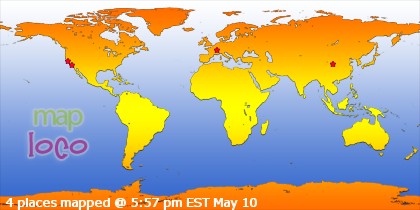
February 20, 2009
PORTLAND, Ore. - Three California condors from the Oregon Zoo will be released into the Vermilion Cliffs Monument in northern Arizona March 7, soaring into the open skies that will finally be their home.
Meriwether (No. 379), Nootka (No. 447) and Atya (No. 455) were hatched and raised at the zoo before being transferred to the Peregrine Fund's World Center for Birds of Prey in Boise, Idaho, to prepare for their release. Meriwether was transferred in January 2007, Nootka and Atya in October 2008.
This trio will be the second group of Oregon Zoo condors released in the 293,000-acre Arizona monument. They will join Tatoosh (No. 367), Ursa (No. 404) and Wiley (No. 420), who were successfully released in March 2008.
"With every successful condor release we're another step closer to seeing condors fly over the skies of Oregon," said Tony Vecchio, zoo director. "One day Oregonians may again see what Lewis and Clark saw as they traveled along the Columbia River over 200 years ago."
This will be the 14th release of condors in Arizona since the Peregrine Fund began its recovery program in 1996. Currently, 67 condors are flying free in Arizona, including two wild-hatched chicks that left their nests in the Grand Canyon in December.
"These monumental strides give us great hope for the survival of this species," Vecchio said.
Condors, the largest land birds in North America, have wingspans of up to 10 feet and weigh 18 to 30 pounds. They are highly intelligent and inquisitive, often engaging in play. Their range extended across much of North America during the Pleistocene Era, which ended about 10,000 years ago. By 1940, that range had been reduced to the coastal mountains of Southern California, and in 1967 condors were added to the first federal list of endangered species. In 1987, the 17 condors remaining in the wild were brought into captivity and a captive-breeding program was developed. The world's total population of endangered condors flying free in the wild is 169 in Arizona, California and Mexico.
The Oregon Zoo's condor recovery efforts take place at the Jonsson Center for Wildlife Conservation, located in rural Clackamas County on Metro-owned open space. The remoteness of the facility minimizes the exposure of young condors to people, increasing the chances for captive-hatched birds to survive and breed in the wild.
The center is currently home to 31 condors and has produced 15 eggs since it was established. Of the 15 eggs produced, 14 chicks have survived.
In 2001, the Oregon Zoo became the third zoo in the nation to join the California Condor Recovery Program. California condor captive-breeding programs are also operated at San Diego Zoo's Wild Animal Park, the Los Angeles Zoo and the Peregrine Fund's World Center for Birds of Prey. The Oregon Zoo was the recipient of the Wildlife Society's Conservation Award for creating the nation's fourth California condor breeding facility in April 2005.
February 3, 2009
OREGON ZOO RECEIVES THREE CONDORS WITH COLORFUL PASTS
New female birds expected to enhance zoo's already successful breeding program
PORTLAND, Ore. -- Three California condors — a would-be homewrecker, the survivor of a shotgun blast to the face, and a bitter old maid — will make a fresh start in the Northwest, looking to find love in the Oregon Zoo's condor program.
Despite these birds' soap-opera pasts, the zoo recently welcomed them to its facility at the Jonsson Center for Wildlife Conservation, where the notorious trio will augment an already successful program for breeding the endangered condor. The birds arrived from the Los Angeles Zoo.
Kojjati, a female condor from California, had been involved in several love triangles while in the wild and was always dumped for the other female. The drama that inevitably ensues in these situations endangers the eggs and young chicks — the primary reason Kojjati was taken out of the wild.
"Condors are normally quite careful around the eggs and chicks, but when they're upset the birds become reckless," said Shawn St. Michael, condor curator. "While Kojjati is in our breeding program, she will be paired alone, which will eliminate any possibility of her interfering in another pair's relationship."
St. Michael is hopeful that a young, single condor can mend Kojjati's broken heart and that she will soon begin laying eggs with a mate of her own.
Timocho was taken out of the wild a few years ago after reports that she had possibly sustained an injury while in a national wildlife refuge. Upon her capture, it was discovered that Timocho had been shot in the face by a shotgun. Pellets from the blast had damaged one of her eyes and her tongue, and fractured bones in and around her mouth.
Although her situation appeared bleak, Timocho was taken to the Los Angeles Zoo and nursed back to health. She was hand-fed at first, but now is able to eat standard food without assistance.
"Timocho has come along way since her injury," St. Michael said. "She can never be released back into the wild, but she is healthy and has learned to overcome her disabilities and permanent injuries."
Timocho will be paired with Willie, a condor who can sympathize with Timocho's situation. As a young chick, Willie was accidentally injured by his parents and lost the use of one of his eyes. Timocho has laid eggs that have hatched in the wild, and St. Michael is very optimistic that the condor program will see chicks from the pair.
The third condor acquired by the zoo is Elewese, a relatively old bird who has lived most of her life in captivity. St. Michael is uncertain whether they will try to pair her with a male, but says Elewese has embraced her matronly role and is content serving as a mentor to the other young condors in the program.
The zoo's condor recovery efforts take place at the Jonsson Center for Wildlife Conservation, located in Clackamas County on Metro-owned open space. The remoteness of the facility minimizes the exposure of young condors to people, increasing the chances for captive-hatched birds to survive and breed in the wild.
Condors, the largest land birds in North America, have wingspans of up to 10 feet and weigh 18 to 30 pounds. They are highly intelligent and inquisitive, often engaging in play. Their range extended across much of North America during the Pleistocene Era, which ended about 10,000 years ago. By 1940, that range had been reduced to the coastal mountains of Southern California, and in 1967 condors were added to the first federal list of endangered species. In 1987, the 17 condors remaining in the wild were brought into captivity and a captive-breeding program was developed.
In 2001, the Oregon Zoo became the third zoo in the nation to join the California Condor Recovery Program. California condor captive-breeding programs are also operated at San Diego Zoo's Wild Animal Park, the Los Angeles Zoo and the Peregrine Fund's World Center for Birds of Prey. The Oregon Zoo was the recipient of the Wildlife Society's Conservation Award for "creating the nation's fourth California condor breeding facility" in April 2005.
The condor recovery goal is to establish a captive population of 150 birds and two separate wild populations of condors, one in California and the other in Arizona. The U.S. Fish and Wildlife Service and the California Condor Recovery Program coordinate and implement the recovery program and provide oversight of all program partners.
Thursday, February 26, 2009
THREE OREGON ZOO CONDORS TO BE RELEASED INTO WILD
Labels: .circus., condors, oregon zoo, wild release
Subscribe to:
Post Comments (Atom)















0 comments:
Post a Comment